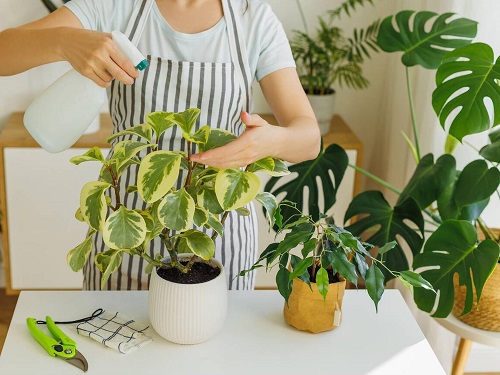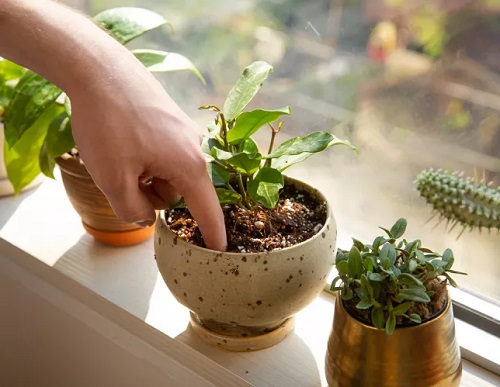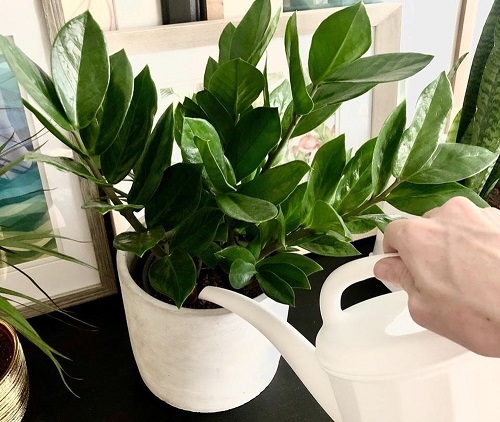Why Reduce Watering in Fall and Winter? For healthier indoor plants, of course! Find out how this crucial step helps them survive the cold.

When the season changes, your indoor plants’ needs also transform. So, why reduce watering in fall and winter? This modification benefits your plants and helps them confront the oncoming cold and less bright days. Let’s explore the details.
Why Reduce Watering in Fall and Winter

1. Plants Grow Slower in the Cold
Most indoor plants go dormant or inactive in winter. At this time, they conserve energy and grow slowly. Reducing the amount of water at this time helps prevent overwatering and encourages plants to store energy for the coming season.
This rest period is essential for plants to rejuvenate and prepare for new growth in the spring. Fall is also a good time to start many houseplants, perennials, and herbs from cuttings.
2. Less Evaporation in Less Light
We all know fall and winter have short days and weaker sunshine, this affects indoor plants as well, reducing water evaporation and transpiration.
If you follow the same watering routine as in the summer, extra water collects in the soil, creating a breeding ground for mildew, mold, and harmful bacteria.
3. Avoid Root Rot
Watering frequently at this time can cause issues such as root rot, which can harm or even kill your plants. Waterlogged soil, lack of sunshine, and dormancy all reduce the plant’s ability to fight off disease and heal.
And in constantly damp soil, roots start getting mushy and overworked. If this is the case, here’s how you treat root rot in houseplants.
Watering Routine for Indoor Plants in Fall and Winter
1. Check Soil Dampness Before Watering

Before you water your potted indoor plants, check the soil moisture by inserting your finger an inch into the soil. If it feels dry, water the plant; if it is damp, wait for a few days until you notice the dryness again.
2. Avoid Watering Regularly

Change the watering pattern you follow in spring and summer, and water the plants less frequently. Depending on the type of houseplants you have, water them once in two weeks or even less. Here are some additional tips to keep your houseplants alive in winter.
For example, if you water your orchid once every 7 days in summer, you should do it every 10-14 days in cooler months.
3. Customize Watering to Each Plant

All plants have different watering needs. For instance, succulents and cacti require less water in winter, whereas tropical plants need more water. Tailor how much you water and when according to the type of plant.
If you have a snake plant, it can go without water for up to 2 months easily, but you’ll need to water your orchids within 2 weeks in winter.
4. Water in the Morning

Try to water houseplants in the morning. This allows the soil to dry out during the day. This routine also prevents roots from sitting in the water overnight and reduces the risk of root rot.
5. Install a Humidifier

Most gardeners increase watering because of dry indoor air—instead, install a humidifier. This increases moisture in the air without causing wet feet. This is particularly useful for tropical babies, such as ferns, aroids, and orchids, who enjoy the mugginess of humidity.
Humidity will also help balance the temperature around these plants and create a less cold microclimate.
6. Create a Microclimate
Building a cozy microclimate for your indoor plants during fall and winter can be a good way to help them survive seasonal changes. You can club like-minded plants together in similar growing conditions. This also keeps the air slightly humid; plants love to be near other plants.
Just make sure there is air circulation to prevent fungal issues. Remember, not all plants need this. Some just want to hibernate, so let them be!


